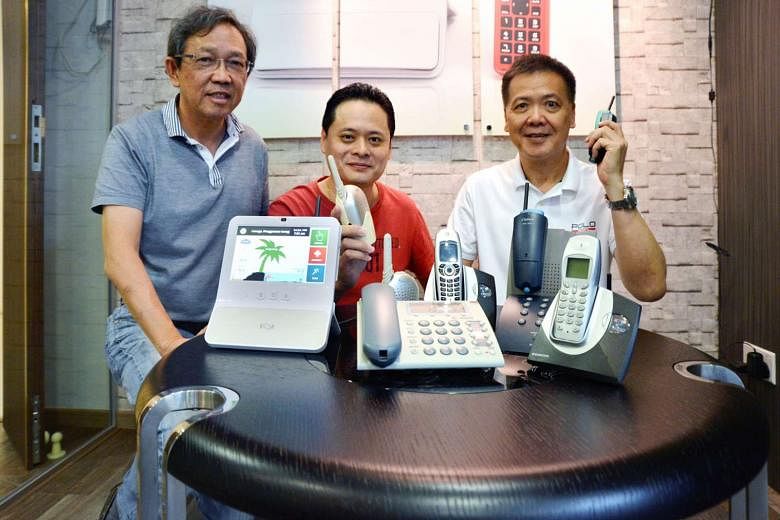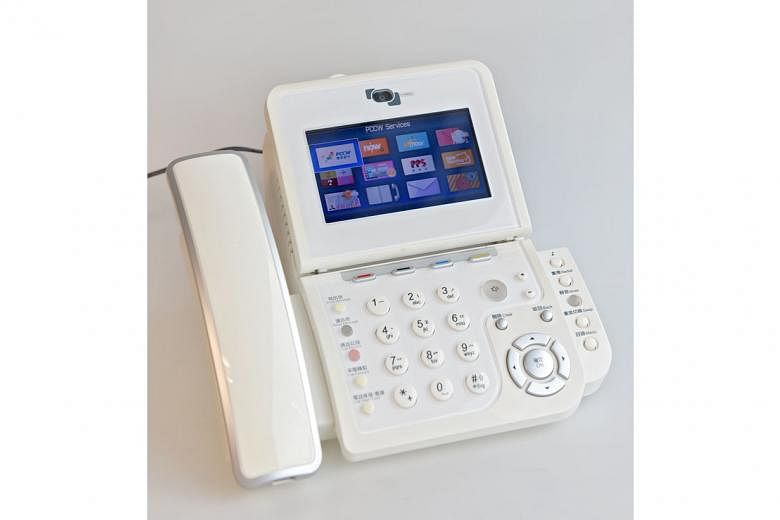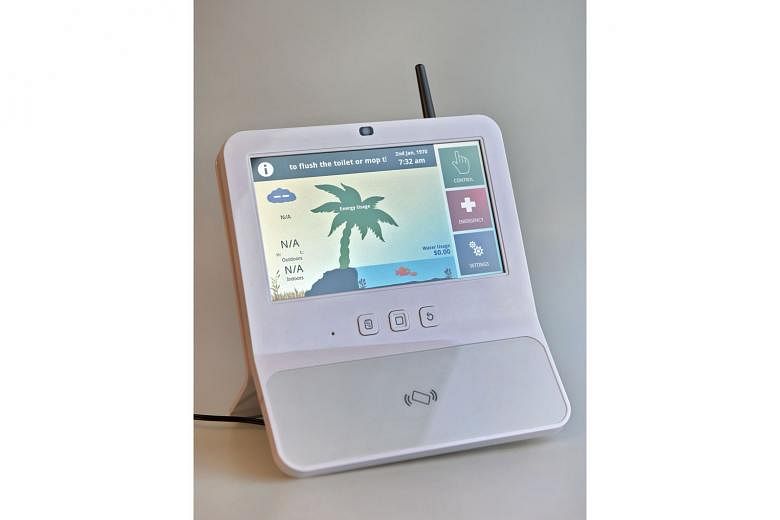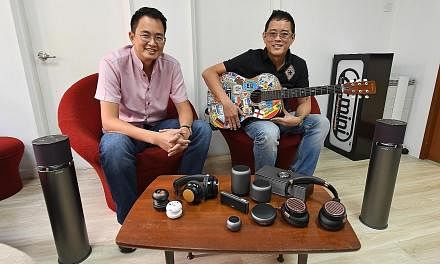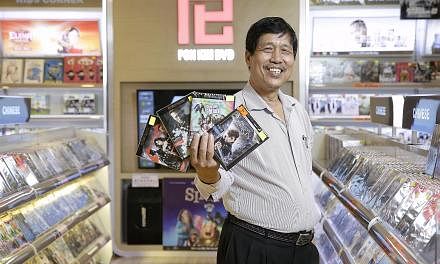A shift in technology can push even a giant to the precipice of irrelevance - think Nokia.
Twice in the last 20 years, Astralink Technology, a Singapore company, found itself caught in the crosswinds of technological shifts and economic malaise. Twice, it came close to being a former tech company.
But it refused to throw in the towel. It is now fighting back with a foray into the Internet of Things (IoT) space - a term referring to home objects that have Web connections such as a connected fridge. The technology helps users keep track of groceries.
Astralink has also ventured overseas and has signed a $5 million-a-year contract with a telco in Africa to supply some 5,000 homes there with energy-monitoring systems.
The local engineering firm first came into the global limelight in 1996 at the world's largest electronics event - the Consumer Electronics Show in Las Vegas - with its biggest hit, the ClipFone.
-
How Astralink's products evolved
-
CLIPFONE
Launched in 1996, the cordless phone received rave reviews for its crystal-clear reception despite its size, and sold 20 million units globally.
Each handset could easily fit into a pocket or be clipped on a belt.
The look was created by American design house Frog Design, which helped create casings for computer maker Apple.
The ClipFone won the Design and Engineering Award at the Las Vegas Consumer Electronics Show in 1996.
It also won a 1996 Good Design Award by the Chicago Athenaeum Museum of Architecture and Design, and Business Week's Industrial Design Excellence Awards in 1998.
FIXED-LINE MULTIMEDIA TERMINALCreated for Hong Kong telco PCCW in 2003, the device allowed PCCW's fixed-line telephony subscribers to make calls, stream music, place horse-racing bets through the keypad and send SMS from the same terminal.
It was said to be the predecessor to the smartphone, which lets users stream movies, play games and book rides.
The invention brought in a total of $100 million in revenue for Astralink from 2003 to 2011.
SMART HOME SYSTEM
Astralink has invested up to $10 million in research and development in home-monitoring systems - used to monitor the safety of the elderly or to track energy consumption.
The system works with sensors or surveillance cameras to detect motion or power consumption. It is powered by software that collates and analyses the data collected.
For instance, the system sends automatic alerts to caretakers via a smartphone app should an elderly person who is being monitored spends more than, say, 30 minutes in the toilet at night.
Irene Tham
The award-winning cordless phone received rave reviews for its crystal-clear reception despite being one of the smallest of its kind in the market, and sold 20 million units globally.
"The product was a breakthrough in phone engineering and design," said Mr Fong Hean Chuan, executive director of Astralink, also known as the "ClipFone company".
In an interview with The Straits Times in his Ubi office, Mr Fong, who was then chief technology officer, said it was a moment of pride for Astralink. But the Asian financial crisis hit hard in 1997, and caused it to teeter on the brink of death with a $7 million debt.
Business advisers were called in and by "a stroke of luck", creditors were willing to convert debts into long-term loans and shares in the company. When Mr Fong took over the reins as chief executive in 2000 - he became executive director last October - the company had $500,000 in cash.
Learning from its past failure, he rebooted the business model to focus on the wholesale market.
The firm created a fixed-line multimedia terminal for Hong Kong telco PCCW in 2003. The device allows PCCW's fixed-line telephony subscribers to make calls, stream music, send SMS and even place horse racing bets from the same terminal by using the keypad.
Astralink described it as the predecessor to the smartphone. It brought $100 million in revenue for Astralink over the next seven years.
That was before what Mr Fong called a "mobile disruption" ravaged its business. The disruption started with the launch of the Apple iPhone 3G in late 2008. "With the prevalence of mobile entertainment, why would anyone need the fixed-line phone?" he said.
Mr Fong recalled desperate attempts to find new ideas when the sun set on its fixed-line business in 2011. "It was a crisis for us," he said.
Fortunately, that same year, a business partner in Taiwan linked it up with German security systems firm Abus to explore new uses for Astralink's multimedia terminal.
Out of it came a multimedia door intercom system, and the product was sold in Europe for a few years. That collaboration would later propel Astralink's entry into the burgeoning IoT space.
Astralink's engineers tinkered with the multimedia door system by adding surveillance cameras, motion detectors and Internet connectivity. They also developed software to collate and analyse the data collected, paving the way for yet another business reboot.
The firm has since invested up to $10 million in research and development, and now specialises in home systems for monitoring the safety of the elderly or for tracking energy consumption.
Last year, it worked with Singtel to install smart eldercare monitoring systems in several homes in Yuhua, as part of Singapore's smart nation trial.
The system sends automatic alerts to caregivers via a smartphone app. For instance, an alert may be sent if an elderly person being monitored spends more than the preset time in the toilet at night. Monitoring is typically done via door motion sensors.
Early this year, the firm scored the African deal, said Mr Fong, an engineer by training. It is also in talks with potential partners in China to distribute its eldercare monitoring systems there.
US-based management consulting firm A.T. Kearney expects the home-based IoT device and system market in the world to be worth US$55 billion (S$76.8 billion) in 2020. Much of the demand will be driven by the United States, China and Japan, with global revenues expected to hit US$400 billion in 2030. A.T. Kearney also expects major applications to be in the areas of security, energy and health management.
Said Mr Fong: "The smartphone revolution has cut our business in both ways."
But though the smartphone may have killed Astralink's cordless phones and fixed-line multimedia terminals, it has also given the firm a new lease of life - because the smartphone is also a prerequisite for the IoT concept to work.
It was heart-wrenching to witness the near-death of a business, Mr Fong said. "But you never quite discard the knowledge you gain from failure; you rechannel it where it best makes sense."
